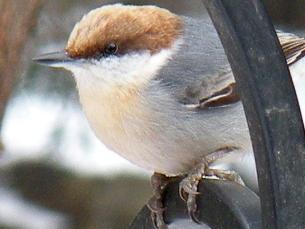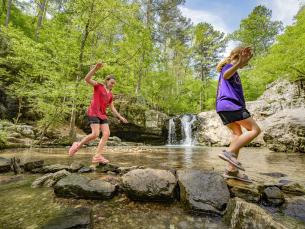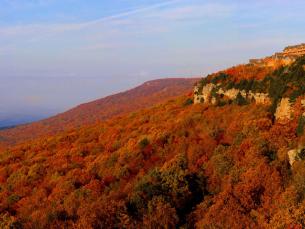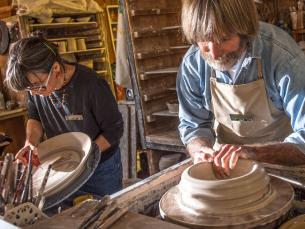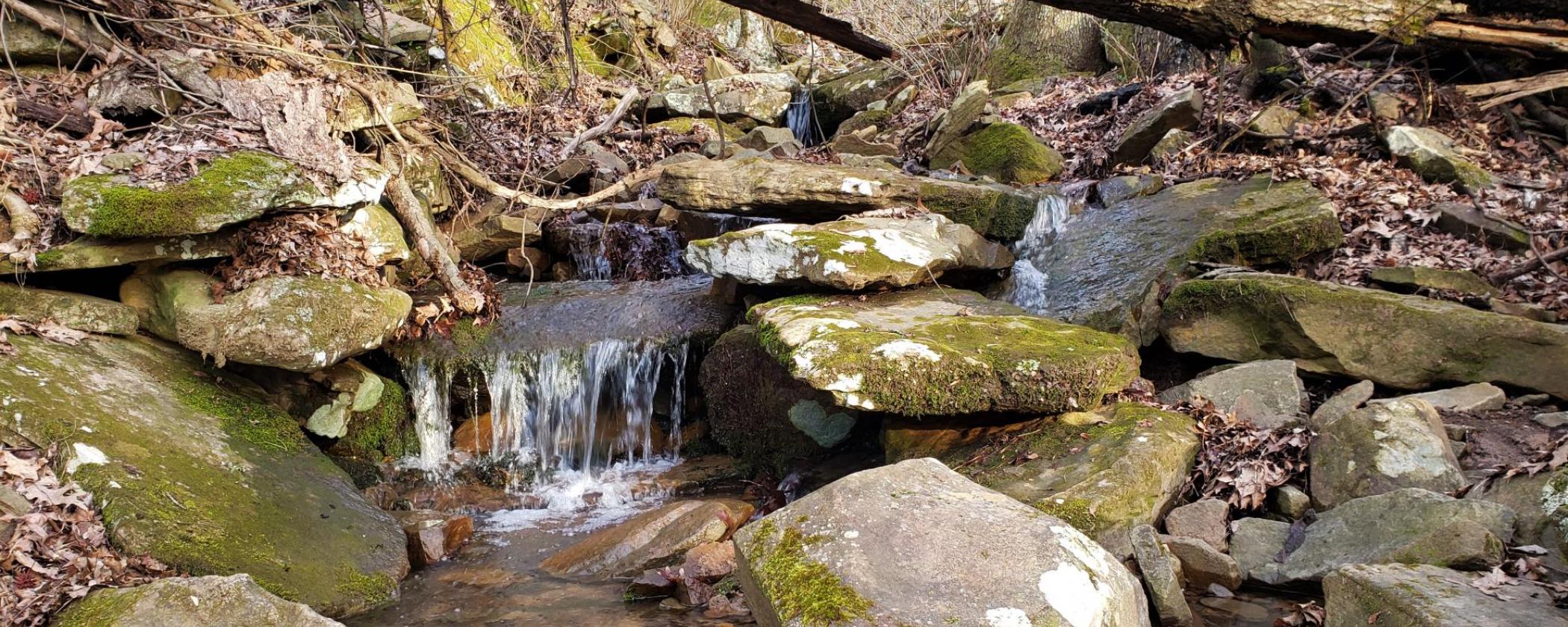
Photo Essay: Flowing Through the Springs of Mount Nebo
By: Jackie RuppMount Nebo State Park, Arkansas’s second oldest state park, is located in western Arkansas just outside of Dardanelle and is about an hour and 40 minutes from Little Rock. Mount Nebo State Park and its staff aim to interpret, safeguard, and enhance the natural, historical, and recreational resources of the mountain.
Mount Nebo State Park is home to several springs that, in the past, drew people to the mountain to live and eventually build a resort called the Summit Park Hotel. Springs on Mount Nebo form when rainwater soaks into the mountain and then exits the mountain at a lower elevation when the water can’t soak into the ground any further.
Today, these springs are a tangible piece of Arkansas’s heritage that transports park guests to the park’s past. Don’t forget to find the featured springs when you make your way to Mount Nebo State Park.
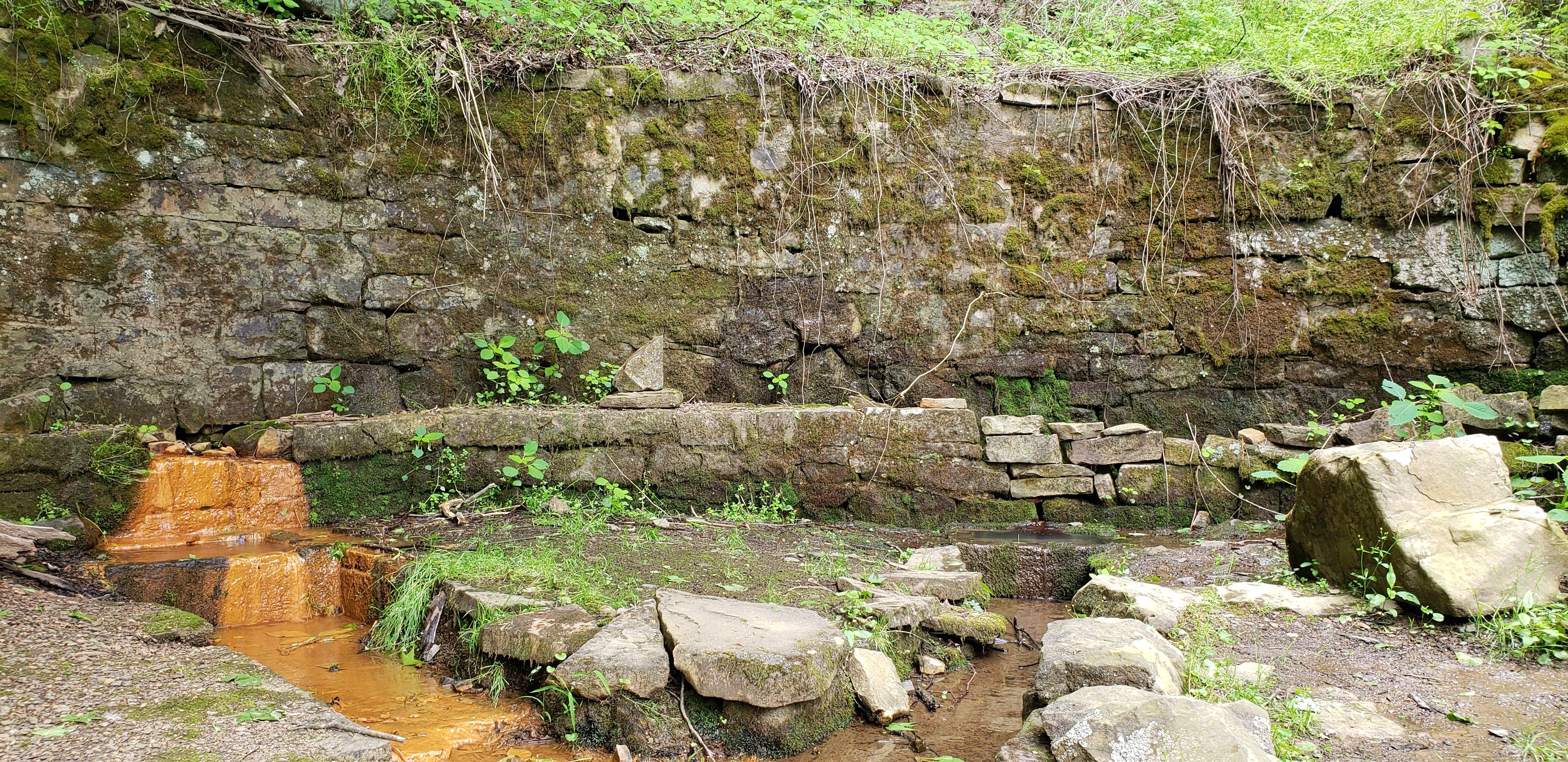
Nebo Springs is located just beneath the Bench Trail and is composed of both an iron spring and a clear spring. As seen in the picture, the iron in the spring water turned its surroundings orange. The retaining wall, rock patio, and holding tanks were built in the 1880s by mountain residents known as “Nebolitans." During this time, guests and residents used the clear spring for drinking and the iron spring for medicinal purposes. Today, park guests are welcome to make their way to the springs to rest and enjoy the view of the Arkansas River Valley below.
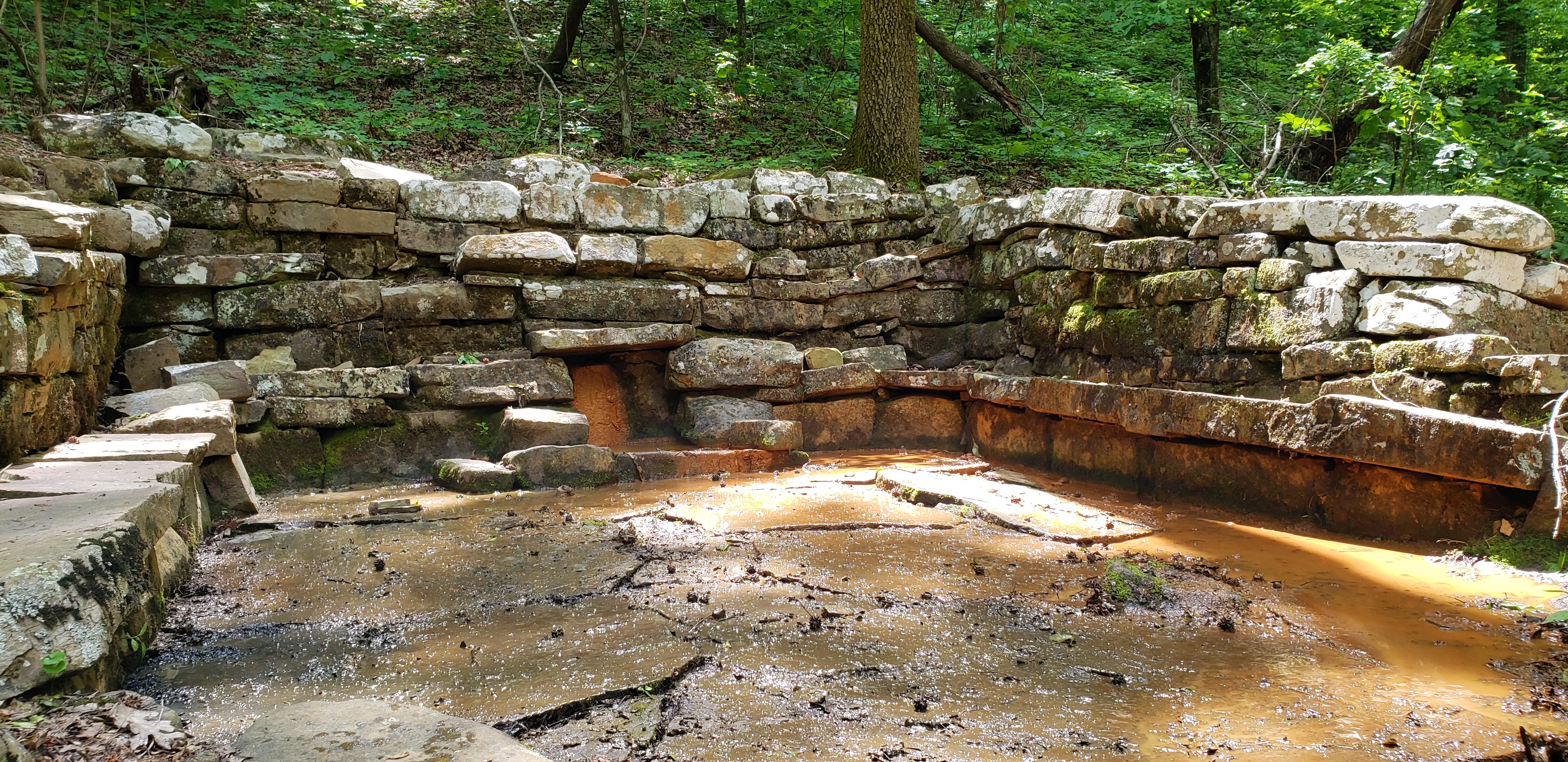
Gum Spring, another one of Mount Nebo State Park’s iron springs, is located where the Waterfall Trail meets the Bench Trail. Like some of Mount Nebo State Park’s other springs, Gum Spring had a holding tank and a wooden gazebo built around it so that it could be accessed and enjoyed by visitors to the mountain. Fire destroyed the gazebo and all that is left today is the gazebo’s foundation and holding tank. Today, Gum Springs serves as a reminder of the past and is a landmark for hikers and cyclists along the Bench Trail.
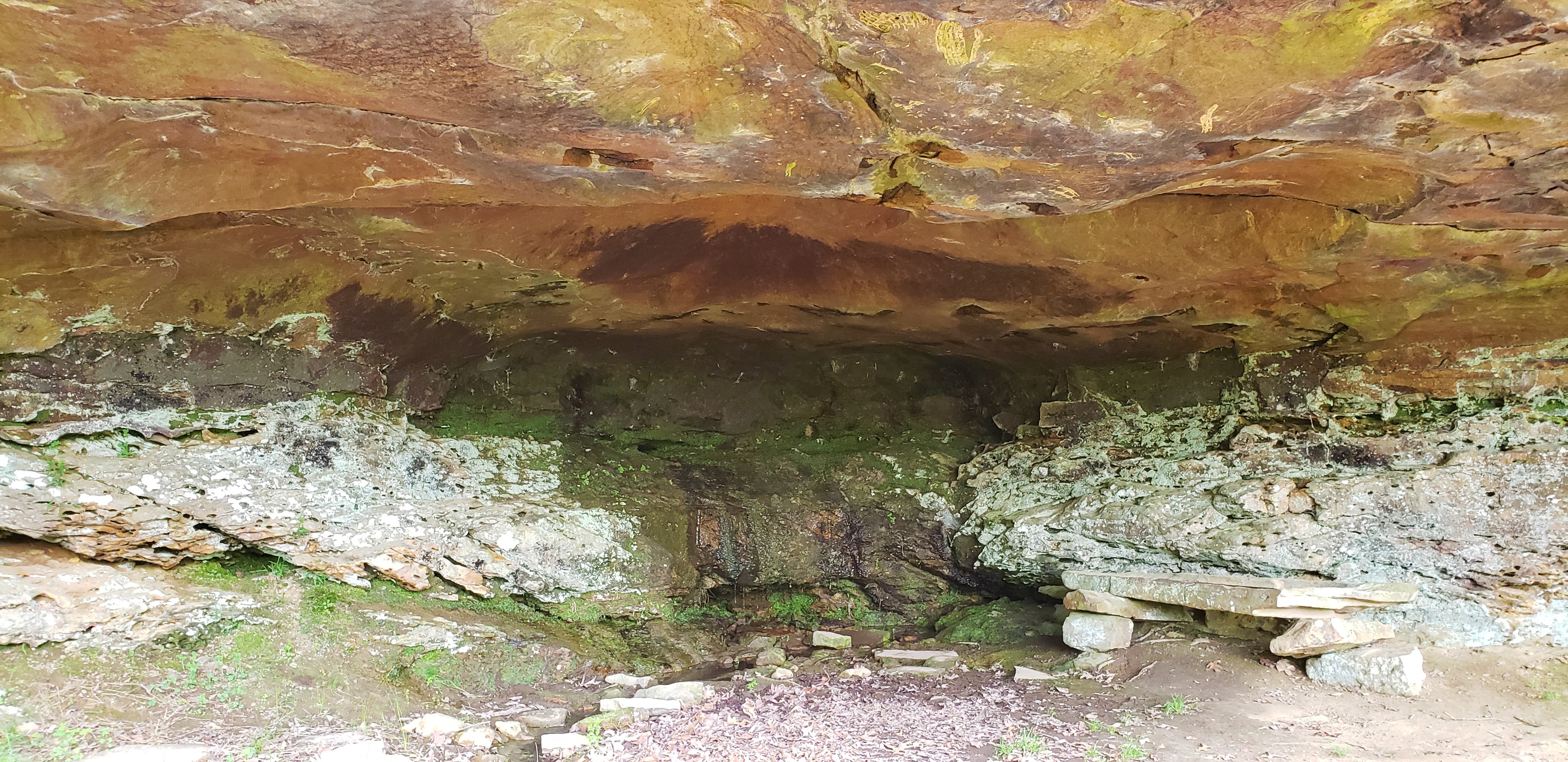
Cave Spring is located on the Rim Trail. It is a clear spring that Nebolitans used for a water source before this area became a state park. Today, Cave Springs is a great place to stop and sit as hikers make their way around the Rim Trail.
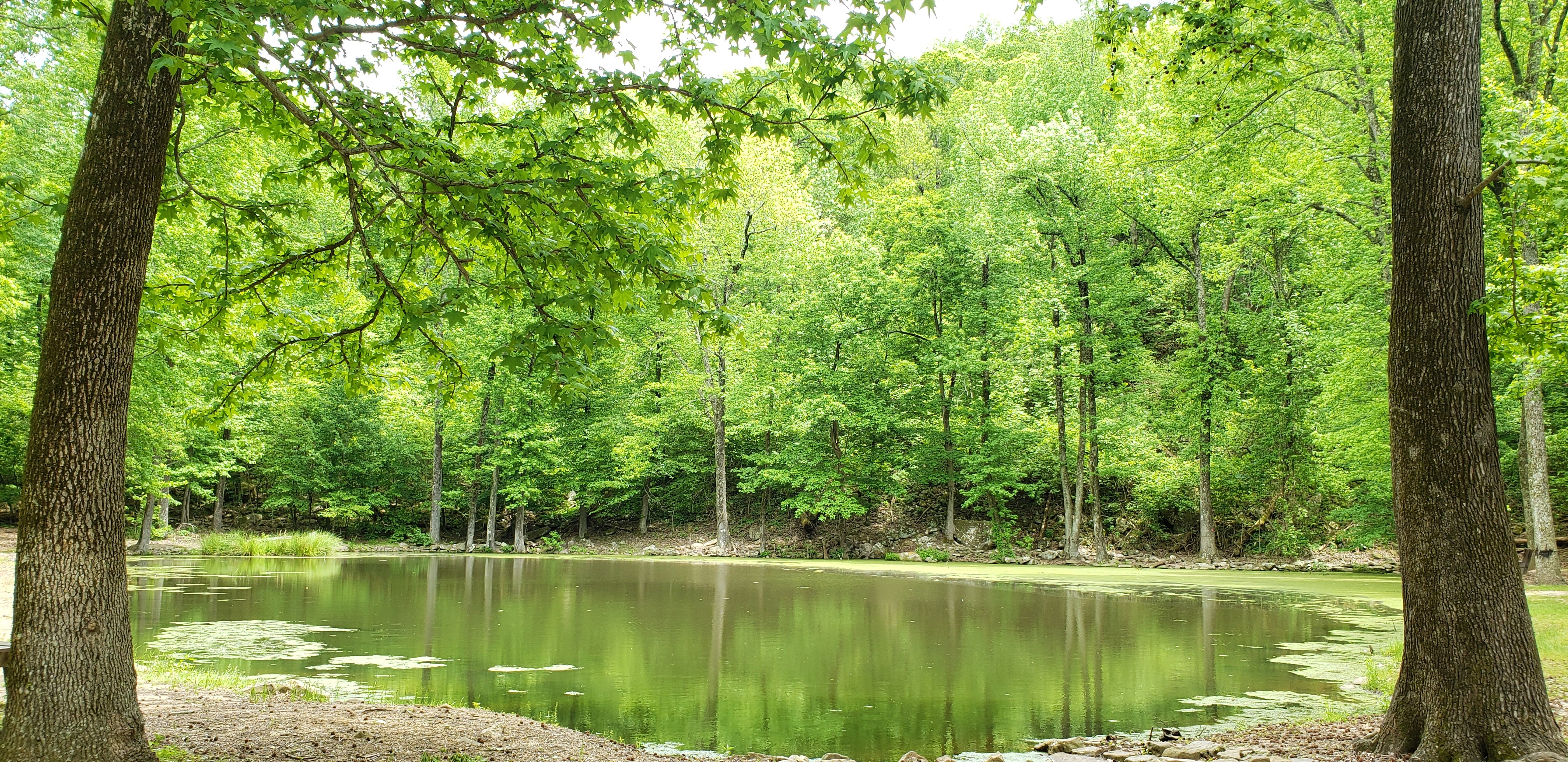
Fern Lake is located on the Bench Trail. Although Fern Lake is fed by five natural springs, it is manmade. During the late 1800s, the owners of the Summit Park Hotel, a resort on Mount Nebo, decided to create Fern Lake by digging a lake and letting the five springs fill it. Guests of the Summit Park Hotel passed time on the lake canoeing and paddle boating. Today, Fern Lake is home to many species of frogs that can be heard calling in the spring and summer.
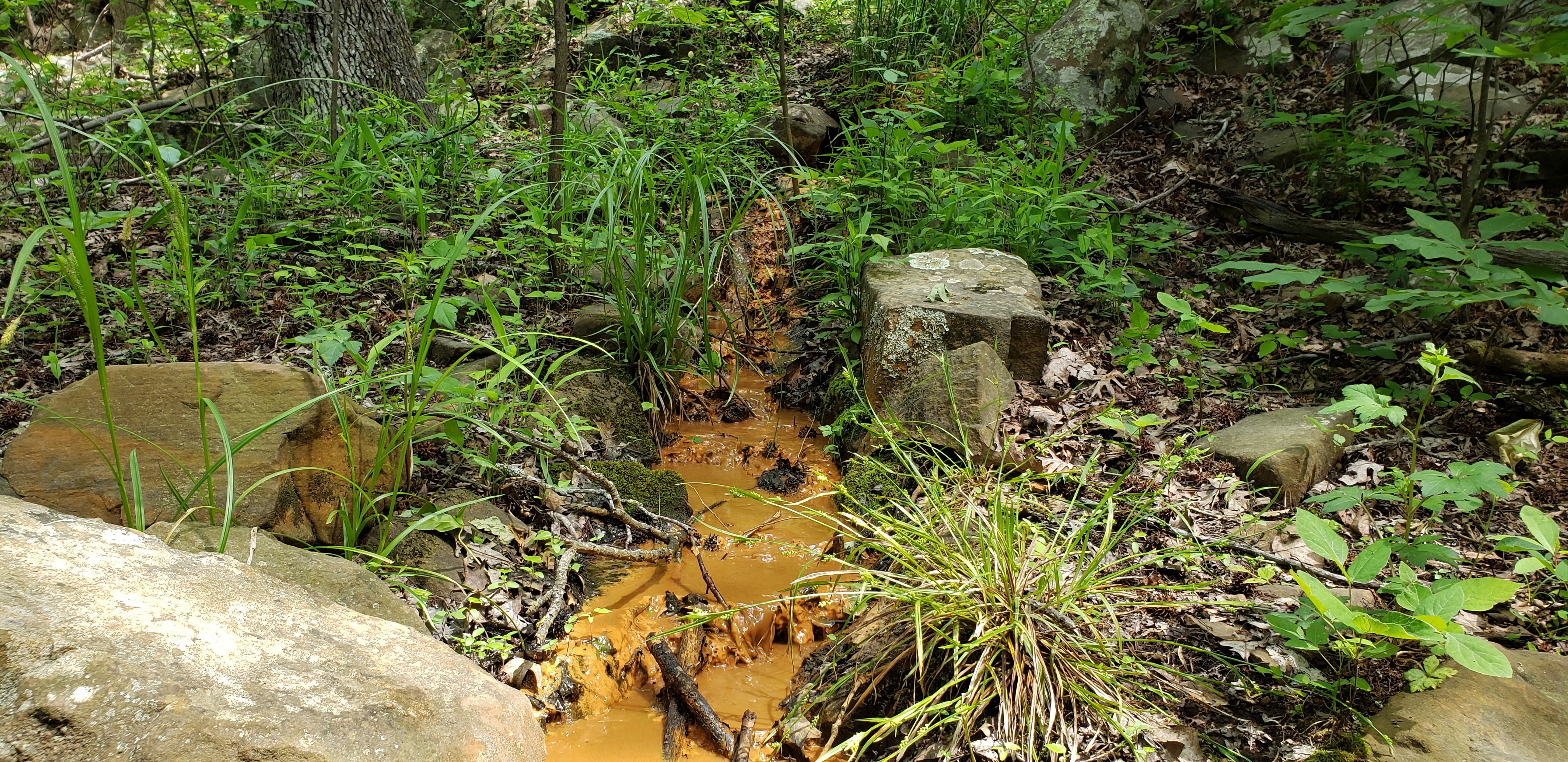
Darling Spring is located on the Summit Park Trail and is another one of Mount Nebo State Park’s iron springs. “Pure chalybeate waters” from springs like Darling Spring attracted guests to Mount Nebo for its supposed medicinal value to cure asthma and malaria. Today, there is no gazebo foundation or holding tank for the spring; this allows park guests to see the spring coming right out of the ground!
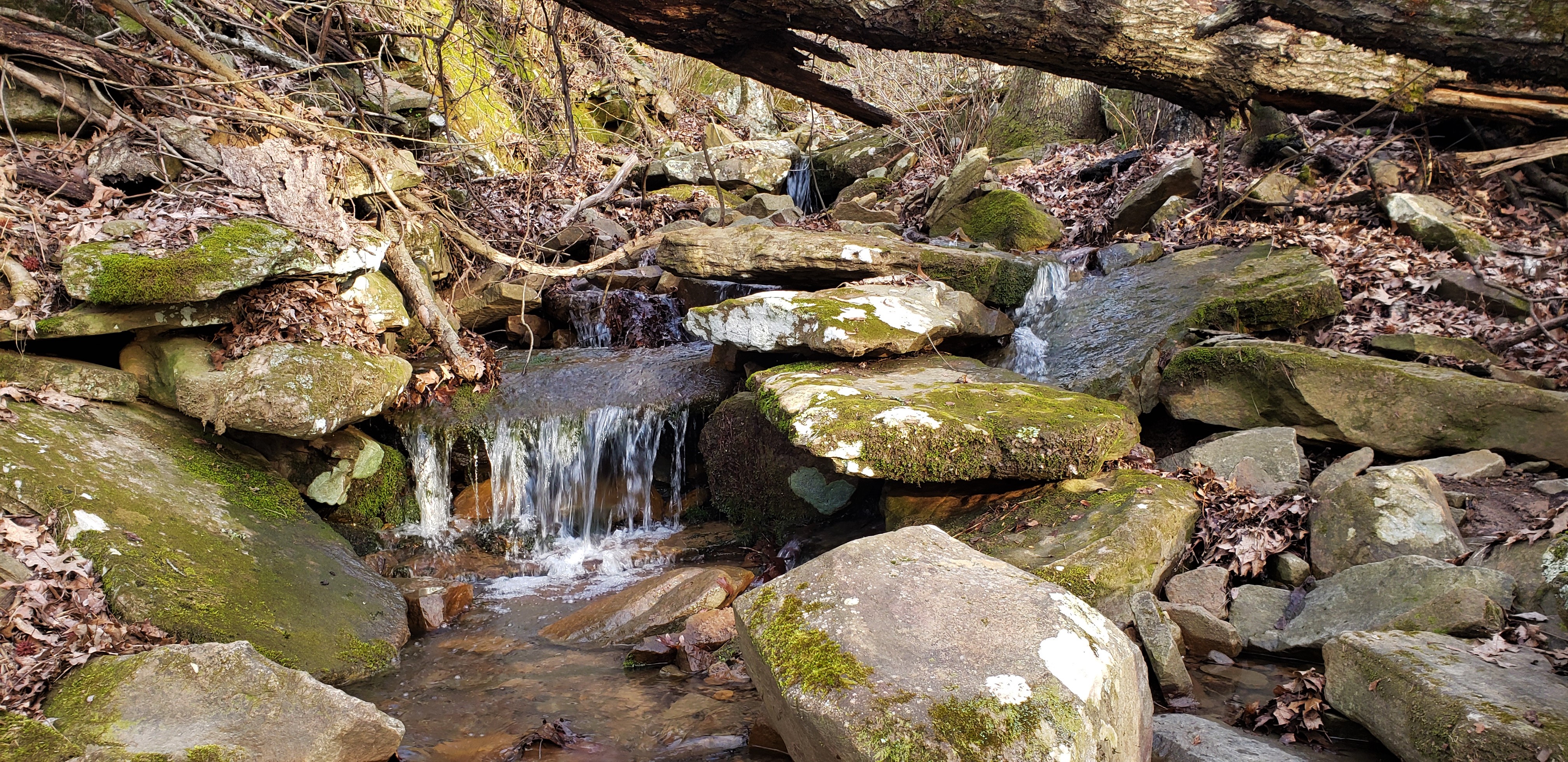
As some springs flow down Mount Nebo they form cascades, like this one. In the past, many of these springs were likely named, but the names have since been lost to history.
Mount Nebo State Park’s springs are a tangible piece of Arkansas’s heritage that transports viewers to the park’s past. Today, I encourage you to discover and rediscover some of the springs that help make Mount Nebo State Park so unique.

